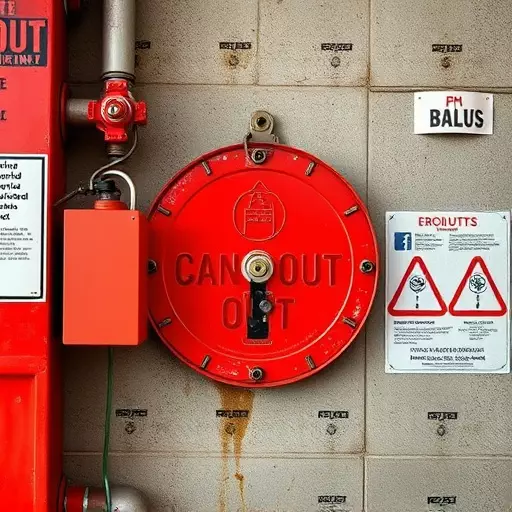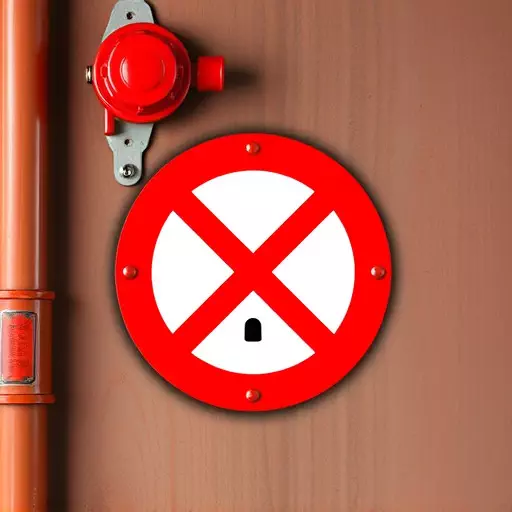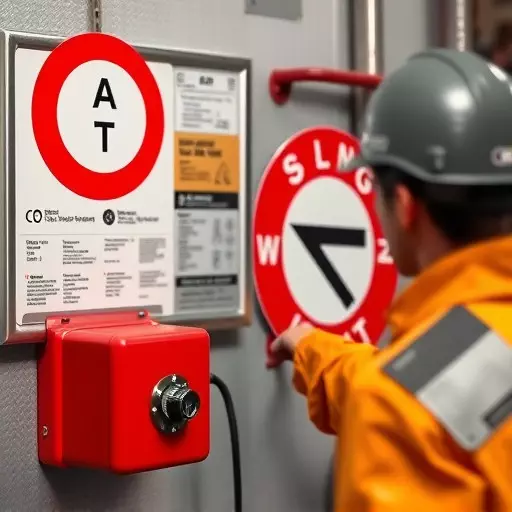Implementing and adhering to OSHA's Lockout/Tagout (L/T) standards is crucial for industrial safety. Effective L/T training empowers employees to identify energy hazards, use proper locking mechanisms, and follow protocols, thereby preventing accidents and fostering a culture of responsibility. Key aspects include clear communication, correct tagging, and utilizing appropriate lockout devices as per OSHA guidelines. Regular energy control procedures training, focusing on L/T methods, is essential for minimizing risks associated with energy-related tasks, ensuring compliance, and maintaining a safe work environment. This comprehensive approach, guided by OSHA standards, plays a game-changing role in modern industrial best practices.
In today’s industrial landscape, ensuring safe energy control procedures is paramount. This comprehensive guide delves into the essential aspects of lockout/tagout (L/T) practices, a fundamental safety foundation. We explore OSHA’s stringent L/T standards and their impact on compliance training. Understanding these procedures isn’t just about adhering to regulations; it’s about fostering a culture of safety. From implementing effective protocols to avoiding common mistakes, this article equips folks with knowledge to enhance lockout tagout compliance and revolutionize workplace safety.
- Understanding Lockout/Tagout: A Foundation for Safety
- OSHA Lockout/Tagout Standards: Regulations and Compliance
- The Importance of Energy Control Procedures Training
- Implementing Effective Lockout/Tagout Protocols
- Common Mistakes to Avoid During Lockout/Tagout Practices
- Enhancing Safety: Continuous Improvement in Lockout/Tagout Compliance
Understanding Lockout/Tagout: A Foundation for Safety

Understanding Lockout/Tagout: A Foundation for Safety
Lockout/tagout (L/T) compliance training is a critical component of energy control procedures, as defined by OSHA lockout tagout standards. This essential safety practice ensures that equipment and machinery are properly secured before maintenance or repair, minimizing the risk of accidental activation and resulting injuries. By implementing L/T protocols, organizations can create a robust safety culture, protecting their employees and adhering to regulatory requirements.
OSHA’s guidelines emphasize the importance of a systematic approach to lockout/tagout, involving clear communication, proper tagging, and effective lockout devices. Energy control procedures training should equip workers with the knowledge to identify potential hazards, select suitable locking mechanisms, and follow established protocols meticulously. This proactive measure not only prevents accidents but also fosters a sense of responsibility among employees, contributing to a safer work environment.
OSHA Lockout/Tagout Standards: Regulations and Compliance

The Occupational Safety and Health Administration (OSHA) sets stringent guidelines for workplace safety, particularly in industries involving energy control procedures. At the heart of these regulations is the Lockout/Tagout (L/T) standard, designed to prevent accidental activation of equipment during maintenance or repair. This critical standard requires employers to implement procedures that ensure energy is isolated and controlled before any work begins on machinery or equipment.
Compliance with OSHA L/T standards involves comprehensive training for all employees, emphasizing the importance of proper lockout tagout techniques. This includes using specialized locks and tags to secure energy sources, such as electrical, hydraulic, pneumatic, and mechanical. Regular energy control procedures training is essential to ensure workers are equipped with the knowledge to safely perform their tasks, minimizing risks associated with energy-related hazards and fostering a culture of workplace safety.
The Importance of Energy Control Procedures Training

Energy control procedures training is an indispensable component in any industrial setting, especially when dealing with potentially hazardous energy sources. It plays a pivotal role in ensuring worker safety and compliance with regulations like OSHA’s lockout/tagout standards. The importance of such training cannot be overstated, as it equips employees with the knowledge and skills to identify, assess, and control energy sources effectively before performing tasks that may expose them or their colleagues to risks.
Lockout tagout compliance training is crucial for preventing accidents, injuries, and even fatalities. It teaches workers how to isolate energy sources through lockout procedures (locking out energy controls to prevent accidental activation) and tagout (placing tags on controls to indicate they are off-line). By mastering these procedures, employees contribute to a safer work environment, reducing the likelihood of accidents sparked by unexpected energy releases.
Implementing Effective Lockout/Tagout Protocols

Implementing effective Lockout/Tagout (L/T) protocols is a critical aspect of maintaining safety in industrial settings where energy controls are in use. These procedures ensure that equipment is properly isolated and secured to prevent accidental activation during maintenance or repair activities, thereby reducing the risk of severe injuries or fatalities. OSHA’s lockout tagout standards outline comprehensive guidelines for employers to ensure worker protection, emphasizing the importance of consistent compliance training.
Regular energy control procedures training equips employees with the knowledge to identify potential hazards, properly apply lockouts and tags, and understand the hierarchy of controls. This includes learning how to use specialized equipment like lockouts, tags, and energy control devices, as well as understanding when and how to implement each step in accordance with OSHA’s guidelines. Such training is crucial for preventing accidents and maintaining a safe working environment.
Common Mistakes to Avoid During Lockout/Tagout Practices

During lockout/tagout practices, several common mistakes can be avoided with proper training and understanding of OSHA’s lockout tagout standards. One of the most frequent errors is failing to properly identify all sources of energy. This includes not just electrical power but also hydraulic, pneumatic, and even thermal energy. Every component that could potentially store or transmit energy must be secured to ensure a truly effective lockout.
Another mistake is inadequate communication and coordination among team members. Clear communication about who is responsible for securing which energy sources is crucial. Failure to document the process thoroughly can also lead to issues. Proper documentation includes detailing each step taken, the energy sources locked out, and the names of those involved. This not only ensures compliance with OSHA lockout tagout standards but also serves as a critical reference for future audits or investigations.
Enhancing Safety: Continuous Improvement in Lockout/Tagout Compliance

In today’s industrial landscape, ensuring safety through robust energy control procedures is paramount. One critical aspect that often gets the spotlight is lockout/tagout compliance training. This involves a systematic process to ensure all energy sources are secured before maintenance or repair work begins, minimizing risks significantly. The OSHA (Occupational Safety and Health Administration) sets strict standards for lockout tagout practices, emphasizing the need for continuous improvement in compliance. By implementing comprehensive energy control procedures training, organizations can enhance worker safety and prevent accidents related to unexpected energy releases.
Regular and effective lockout tagout compliance training is essential. It educates employees on proper techniques, such as identifying energy sources, using appropriate locks and tags, and following established protocols for securing and testing equipment. This not only ensures the safety of workers but also helps organizations avoid costly fines and legal issues related to OSHA lockout tagout standards. Continuous improvement in this area fosters a culture of safety awareness, making it a cornerstone of any modern industrial operation.


